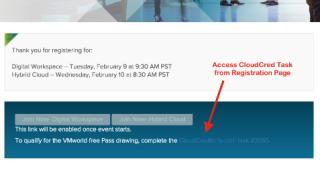At today’s keynote during the 10th annual VMworld in San Francisco, CEO Pat Gelsinger made some announcements to where VMware is heading and the updates to its current product line. As VMware’s road-map has continually pointed to the Software-Defined Data Center, they have solidified this premise with some incredible announcements today. Let’s get started:
vSphere 5.5
vSphere 5.5 will be the next update to their vSphere platform that currently sits at 5.1. This includes upgrading the virtual hardware version to 10 and includes enhancements to AHCI and new graphics support for Intel and AMD GPUs. Hardware version 10 also includes support for CPU-C states which will take advantage of new CPU enhancements. Finally, they have added support for hot swappable SSD PCIe devices no longer requiring the host to be offline.
Changes to vSphere 5.5 also include new limits to the physical hosts hardware setup:
- Maximum RAM is now 4TB (Previously 2TB)
- Virtual CPUs per host is now 4096 (Previously 2048)
- NUMA nodes per host is now 16 (Previously 8)
- Logical CPUs per host is now 320 (Previously 160)
- VMDK files of 64TB file size for VMFS5 as well as NFS
The vCenter Server and Appliance have also seen some significant changes as well. The appliance will now support as many as 500 vSphere hosts and up to 5000 virtual machines. The vSphere Web Client has been updated to now support OSX for console access to your VMs, deploying templates and attaching client devices (about time considering most VMware employees are rocking Macbooks). The Web Client updates include new drag and drop functionality as well as filtering your searches inside the client.
There were finally many improvements to the SSO functionality within vSphere Server. Most admins will admit this is the most painful part of any vSphere server install or update. VMware has listened and has improved the integration between SSO and Microsoft Active Directory and a more simplified installation process.
Virtual SAN
One other piece that has caught my attention is the new Virtual SAN that is currently in its beta phase. The Virtual SAN will allow you to use the local storage on your hosts to create a shared datastore for them to use. Many of you may recognize this as VMware’s Virtual Storage Appliance or VSA. However, the difference is that the Virtual SAN will be built into the ESXi 5.5 hypervisor. At this time, it will still require an additional license and is expected to be released within the first half of 2014.
VMware NSX
NSX is VMware’s new network virtualization layer. NSX will be the network hypervisor of sorts that will provide the virtual layer over your physical network. This will enable you to virtualize your network. NSX will be implemented as an extension of the Virtual Switch and will work with all existing network hardware. VMware is expecting to release NSX by the end of 2013.
Overall, there are some very exciting things coming from VMware in the very new future and they are absolutely changing the face of the data center. I have already signed up for the Virtual SAN beta and looking forward to getting it setup and tested in my environment.
Like this:
Like Loading...






